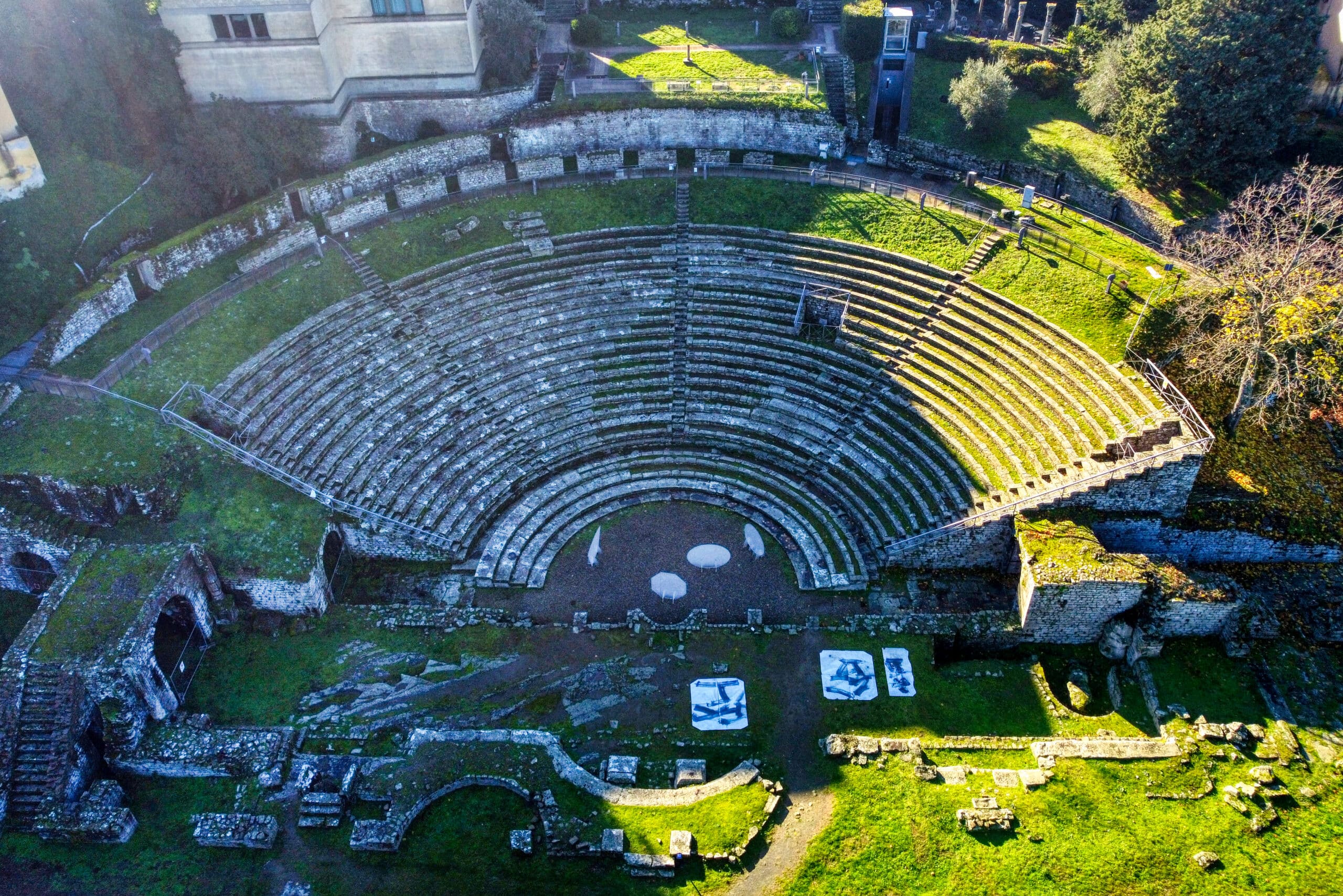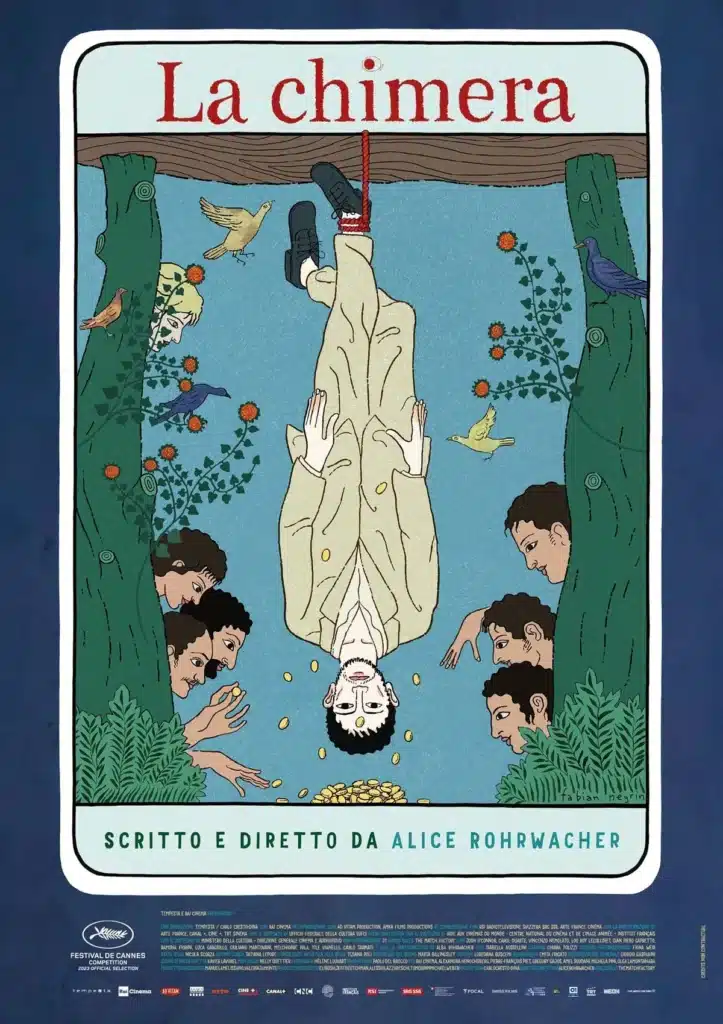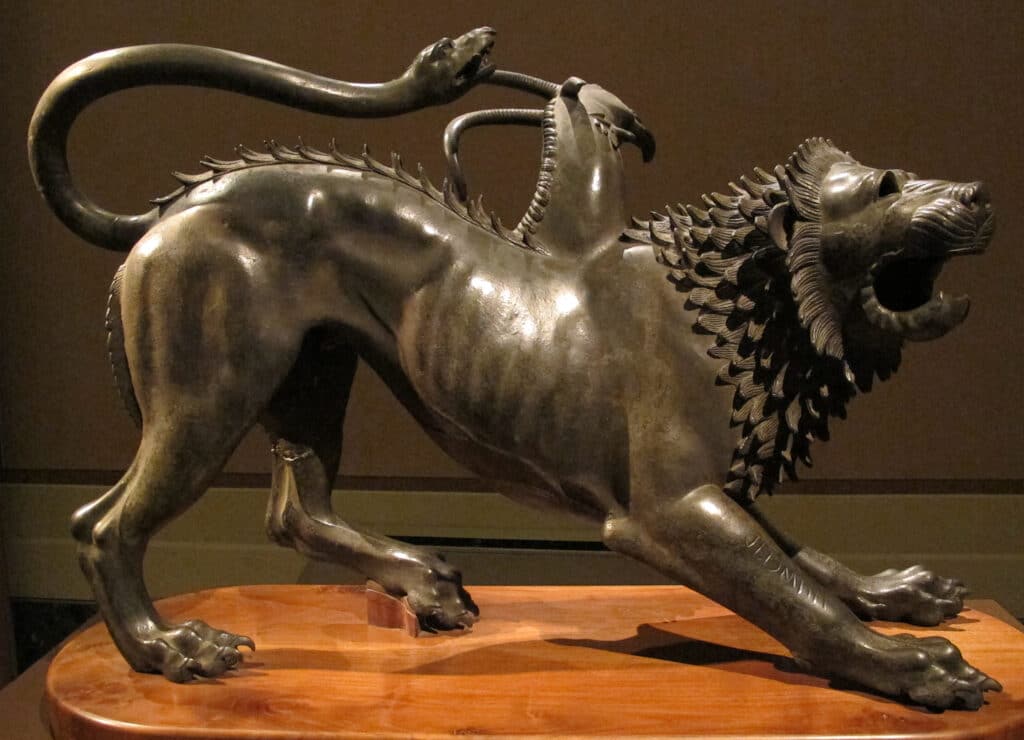
The Etruscan civilization: name, origin and language
A quick and picturesque drive from Florence can take you to discover the Etruscan civilization in Fiesole. Here we still have the Etruscan theater and the Etruscan walls. The Etruscan civilization is as fascinating as it is challenging to decipher, for a long series of reasons. The first has to do with their name. What we now call Etruscans comes from the Latin term Etrusci or Tusci. However, they referred to themselves as Rasenna or Rasna (probably meaning simply “person”). The Greeks called them Tirreni, named after a mythical leader who fled from Lydia, a region in present-day Turkey, to settle between Tuscany and Lazio. This is also the origin of the name of the “Tyrrhenian Sea”, the part of the Mediterranean that overlooks Tuscany. Another enigma about the Etruscan civilization is their origin.
The Etruscan provenience
Even today, historians cannot clearly state whether they are indigenous to central Italy or if they originated from a group of immigrants who first passed through the Greek island of Lemnos before setting in Etruria, i.e. modern Tuscany. What is certain is that this region was particularly rich in resources, with fertile and easily cultivable land, abundant mineral deposits for extracting precious metals, and a broad coastal area encouraging fishing, navigation, trade, and promoting interactions with other civilizations in the Mediterranean area. Another uncertainty surrounds the language. The Etruscan is unrelated to Greek or Latin and might not even be considered an Indo-European language. Scholars understood its alphabet and individual phonemes well, but the surviving written records, although numerous, are mostly short and fragmented, making the interpretation really challenging.
Etruscan tombs
The issue of burials is central to the image of the Etruscans, associated with their deep connection to the cult of the dead. In fact, the Etruscans in Fiesole left a big burial area. This perception is influenced by the fact that ancient Etruscan civilization was largely destroyed or replaced by much more recent settlements, with the traces of their past buried beneath the signs of modernity. Archaeological studies and discoveries in Etruscan tombs provide valuable insights into their religiosity, funeral rituals, and the daily life of this people. Most part of the knowledge we have nowadays of this population is thanks to the millions of tombs we have found throughout Tuscany and Lazio. An important Etruscan archeological area is the region of Tuscia, in Lazio. In the last decades there was a regrettably big “black market” of Etruscan antiquities stolen by the so-called tomb hunters, “tombaroli” in Italian. If you want to have great portrait of that period (not a long time ago though) you can watch the movie “La chimera”, by Italian film director Alice Rohrwcher (2023).
The decline of the Etruscan civilization
Meanwhile, the golden age of Etruscan civilization was slowly coming to an end. From the north, the Celts approached, and from the south, the Romans did. With attacks on all fronts, Etruria could only surrender. Starting from the 3rd century, it fell under the dominion of Rome. Nevertheless, in the 4th century BC, a young man of noble birth from the Etruscan city of Tarquinia, whose name was Lucius Tarquinius Priscus, tried his fortune in Rome and he eventually became king of the city. The victorious Romans, despite defeating and later absorbing and integrating the Etruscan people, were amongst the first scholars to show interest for their culture.

The Etruscan fame
One passionate “Etruscologist” was Emperor Claudius, who, drawing on direct sources, outlined the history and traditions of this intriguing civilization in a twenty volumes book, unfortunately lost to us. Other, albeit smaller, testimonies come from various Greek and Latin authors, indicating the fascination with the Etruscans even in ancient times. The Etruscan fame, dormant during the Middle Ages, resurfaced in the 16th century. In the 18th and 19th centuries, during the Romantic era, interest in this mysterious people was at its peak, fueled by abundant archaeological discoveries in Tuscany and Lazio. Studies continued throughout the 20th century and remain active today. While not everything is known for certain, there’s enough to outline a realistic and astonishing picture of the culture, life, and society of a people that has indelibly marked Italy’s history.
Etruscan women were independent
Etruscan women enjoyed significant freedom and respect within society. Their emancipation led them to be independent, playing a crucial role both within the household and in economic, cultural, and political life. Women took care of the home, managed finances, organized servants’ work, nurtured friendships. The also presided over various activities, starting from tending to the fire that warmed and illuminated the dwelling, being even undiscussed protagonists with their husbands of the festive banquets. In addition to having the right to their full name, Etruscan women could also pass their name on to their children. We even know of an Etruscan woman who pursued a political career, becoming a judge in the city of Tarquinia. Etruscans were not hesitant to display affection publicly. Husbands and wives embraced and kissed daily, held hands naturally in public, as evident in numerous Etruscan sarcophagi depicting couples participating in banquets, where the wife was often depicted as equal in size to the husband. This indicates equality between husband and wife within the family.

Misbelieve about the Etruscan women
A common stereotype among the Etruscans suggests that women were available not only to their husbands but to all men, but this is a misconception, as polygamy did not exist. Another widespread misconception involved post-banquet activities, suggesting Etruscans engaged in unrestrained orgies. However, this was not true and was rather an imported practice from the Greeks. In contrast to the Greeks and Romans, Etruscan women enjoyed great freedom. Greek women were confined to their homes, unable to go out alone, attend public events, pursue careers in trade or politics, or even accompany husbands to banquets.This is why the Romans used the term “Etrusca” to call a prostitute.
Etruscan society
The average life expectancy was around 40 years. Many wealthier Etruscans had only one child, while the poorer preferred larger families to ensure their lineage’s survival and secure low-cost labor. Etruscan dentists were highly renowned; in fact, dental practitioners, using animal teeth or crafted clay replicas shaped and filed, were adept at creating excellent prosthetics held together by finely modeled thin gold sheets secured to the gums with specific pins. The Etruscan civilization paid great attention to their physical appearance and couldn’t tolerate being seen without teeth. There were even entirely gold prosthetics, which some wealthy individuals had implanted solely for aesthetic reasons. Such a precious and brilliant smile certainly didn’t go unnoticed. They also knew how to prepare effective medicines, utilizing herbs and fruits abundant in their lands. They were also skilled surgeons.
Etruscan cities
All Etruscan cities were strategically located, near water sources, like rivers, lakes, or seas, or on small promontories providing an excellent view of the surrounding terrain to observe the arrival of potential enemies and prepare to repel them. This was the case of the Etruscans in Fiesole, since they settled themselves on a hill overlooking the valleys. Among the Etruscan cities, Tarquinia was one of the largest and well-organized. Each city had temples dedicated to deities – Tinea (Zeus), Uni (Hera), and Menerva (Athena). Temples for Aphrodite, Hephaestus, and Ares were always built outside the city walls. The Etruscans didn’t want these three powerful deities with their tendencies and characteristics – lust, fire, and war, respectively – to manifest too strongly within the city.
Etruscan temples
Etruscan temples were rectangular buildings, divided in half. In the first part, there was a large central cell with the statue of the god to whom the temple was dedicated, flanked by two narrower side cells. In the front, columns supported the double-sloped roof, and near the entrance was the main altar. Here, priests and citizens gathered to pray, leave offerings to the gods, and conduct official animal sacrifices in their honor. The temples were always elevated, and a short staircase led to access. The Etruscan temple of Fiesole is unique, because it’s the only one still having part of the walls.
If this brief introduction about the Etruscan civilization sparkled your interest, why don’t you come to Tuscany and learn more about the Etruscans in Fiesole with the tour of Fiesole? It’s not only about the Etruscans, because we also have an authentic Roman theater, flanked by the thermal Roman baths and several medieval tombs (V-VI cent. c.e.).
